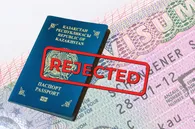On March 1, 2016, Kazakhstan introduced a novel addition to its calendar – Gratitude Day. This holiday signifies a fundamental human emotion: expressing thanks for assistance, support, and the readiness to make sacrifices for one's neighbors.
Gratitude Day in Kazakhstan started eight years ago, marked by a Presidential Decree officially designating this date in the List of Holidays of the Republic of Kazakhstan. The deliberate choice of March 1 for celebration aligns with the founding of the Assembly of the People of Kazakhstan in 1995, playing a vital unifying role in the nation's modern history.
The holiday's creation is linked to Kazakhstan's historical narrative. Throughout different periods, the Kazakh people hosted migrants voluntarily coming to cultivate lands or build cities, as well as those deported. Following the traditions of the Great Steppe, the Kazakhs welcomed everyone, sharing their resources.
Gratitude Day reflects this historical process, emphasizing coexistence and unity in diversity. The holiday encourages remembering historical events and fostering a collective spirit of gratitude, solidarity, and appreciation for Kazakhstan's diverse cultural heritage.
In essence, Gratitude Day celebrates the nation's history, cultural diversity, and the enduring spirit of generosity that has shaped Kazakhstan into an inclusive society. This commemoration underscores Kazakhstan's identity rooted in welcoming, sharing, and appreciating the contributions of its diverse population, fostering a nation thriving on unity, gratitude, and mutual respect.
On February 29, Akbarzhon Ismailov, the public deputy chairman of the Assembly of People of Kazakhstan and Chairman of the National Ethnocultural Center of Tajiks shared his thoughts on the importance of the Gratitude Day. In his post on Facebook, he noted that this holiday has increased the feeling of kindness and friendship in the hearts of all Kazakhstanis, as well as mutual trust and respect. Ismailov embarked on the strength of people shown in times of repression, as well as the hospitality of the Kazakh people.
“[...]I am proud of my motherland Kazakhstan, which is the stronghold of patriotism, friendship, and unity, which brings together the ethnic groups of the country and enables them to prosper. I call on all my contemporaries, who were born, raised and grew up in this country, to continue the bright example of international friendship and multiply the unique advantages of our united nation. On behalf of the Tajik ethnic group and representatives of all other ethnic groups, I bow my head and thank the Kazakh people for their kindness, generosity and hospitality!”
Symbols of Gratitude Day
Despite the fact that the holiday is relatively new, some celebration traditions are already being developed, like hosting charitable events, concerts, and roundtables. As for the symbols of Gratitude Day, back in 2019, the Assembly suggested three things that reflect the hospitality of the Kazakh people, as well as some historical events — kumys, kurt and snowdrops.
“Kumys is not just an embodiment of ancient traditions and millennia-old way of life of Kazakh people, this drink gave courage and bravery to batyrs [Kazakh warriors — QM ] in battles for their motherland, it saved thousands of people from hunger and disease in the years of great trials.
Kazakhs also shared kurt [a traditional food made by drying fermented milk — QM] with the settlers. Many people are familiar with the shots from the movie in which children throw "stones" at exhausted people under guard - this was kurt, which helped them not to die of hunger. Blankets and clothes made of felt saved children and old people from severe frosts and winds.
The snowdrop, a flower that appears from under the snow in the days of the first spring heat, is considered to be the embodiment of resilience, endurance, and hope. Kazakh families, who shared shelter, bread, and water with the settlers, helped people who had been torn from their homeland to overcome hardships and survive,” shared the Assembly.
How it is celebrated this year
Events commemorating Gratitude Day will be held all across Kazakhstan. Looking at the celebratory events in two major cities — Almaty and Astana — the public will have a wide range of festivities to look forward to.
On March 1, Almaty is set to conduct dedicated class hours and open lessons at schools, while city libraries will host book exhibitions and literary hours.
Some of the most prominent events include the following:
A concert "Alghys aytu - parazym" at 10:30 in the Center for Social Services "Senim." The youth theater "Zhana ghasyr" presenting "The Lion King" at 11:00 in children’s home № 2.
A performance of "Aladdinnin sikyrly shamy" at 11:00 in the State Puppet Theater, followed by "How to treat the lion's fear?" at 16:00.
A round table discussion at 11:00 in Akhmet Baitursynov House-Museum with scientists and historians dedicated to the Day of Gratitude.
A poetry contest among school students, "Algyska toly ak zhurek!" at 15:00 in Alatau Creative Hub.
An exhibition of letters, "Dear Dinmuhamed Akhmedovich," opening at 15:00 in the Museum of D. A. Kunayev.
A festive concert program, "Rizashylyk meyirimdilik bulagy," at 16:00 in the N. Tlendiev Memorial Museum.
Astana will host various festive events, including exhibitions, concerts, and theatrical performances for Gratitude Day. Public spaces and city streets will be decorated.
The Children's Music School will feature a festive concert program, while other schools will host activities like an open educational hour, a photo exhibition, a greeting card competition, and the "Ustazym, sizge an algys!" challenge.
The Palace of Schoolchildren named after M. Utemisov will hold events such as a congratulatory program, an online quest, an exhibition of drawings and photos, a master class on arts and crafts, and activities between ethnolinguistic centers under "The Marathon of Good Deeds."
On this day, the Puppet Theater will present a performance for children with special needs called "Alvin and the inhabitants of the mysterious forest", and the theater "Zhastar" will host a play by the center "Demeu" called "Zholy bolgysh zhigit".
The House of Friendship will host a roundtable meeting and a solemn ceremony presenting funds collected for the treatment of children in need, with the participation of members of the Assembly of the People of Kazakhstan.
The Palace of Peace and Reconciliation will host a concert by the ensemble "Birlik."
In celebrating Gratitude Day, Kazakhstan not only honors its rich history but also embraces unity, generosity, and cultural diversity. The events planned for this year in Almaty and Astana showcase a vibrant tapestry of festivities, reflecting the nation's commitment to gratitude, kindness, and mutual respect. As Kazakhstan continues to mark this special day, may the spirit of appreciation and unity fostered by Gratitude Day resonate throughout the nation, bringing people together in a celebration of shared values and collective strength.










